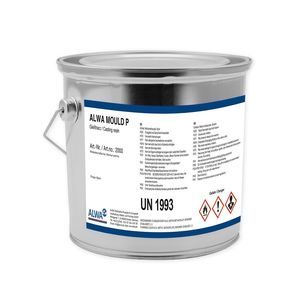
Compound D


Add to favorites
Compare this product
Description
Large volumes of more than 2500 kg can be cast in less than 45 min.
Good castability
Hardly measurable linear shrinkage
High temperature resistance
Demoulding process after approx. 90 min. (after adding the backfilling compound)
Chemical adhesion to polyester or vinylester gelcoat
Immediately after the first mould half has cooled down, the second mould half can be prepared
Copper pipes keep the mould surface on a nearly constant temperature
Post-curing is not necessary
Surfaces of:
Polyester gelcoat
Vinylester gelcoat
Foam moulds
Surfaces of:
Polyester gelcoat
Vinylester gelcoat
Epoxy gelcoat
Metal spray surface layer (zinc)
Galvano
For example suitable for:
Polyurethane (PU) foam injection
Resin injection moulds
Reaction injection moulding (RIM) / Structural reaction injection moulding (SRIM)
PU reaction injection moulding
PU integral foam moulds
PU flexible foam moulds
Glass fibre mat reinforced thermoplastics
(GMT) and fibre reinforced polymer (FRP) for prototypes and small series
Cold and hot pressure moulds up to 130 °C
Application: - Foam molds, cold press molds, Pouring or ramming mixes, RTM pressure injections
Preparation of the backfilling
Calculate the complete casting volume in litres (e.g., calibration with water or sand) and multiply the amount with the density = complete quantity of backfilling.
Bend the copper pipe over the pattern and fix it to the prefabricated casting box with a distance of 20 –
40 mm from the pattern’s surface. The pipes should have a distance of approx. 60 – 80 mm to each other.
Screw the casting box with the fixed copper pipes to the model and then begin to seal.
Catalogs
Other ALWA Technische Produkte für Kunststoffverarbeitung products
Casting compounds
*Prices are pre-tax. They exclude delivery charges and customs duties and do not include additional charges for installation or activation options. Prices are indicative only and may vary by country, with changes to the cost of raw materials and exchange rates.







